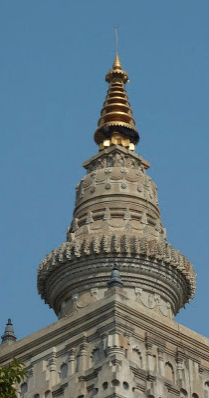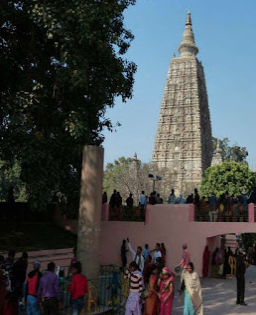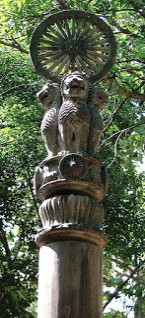
Ancient Stupas
| The Great Stupa, Bodhgaya, India |
|
One day as he was giving a teaching to the Mahayana Bodhisattvas, he decided to travel to the area they had left. He had seen that thousands of disciples in this area had the seeds to realize emptiness in this life and that the Mahayana Bodhisattvas he was teaching had planted these seeds. He saw that there was a danger from King Suradatta and he decided to go and face it. Within this one week, each day without eating, he taught disciples all day and circumambulated the stupa all night. During this week of teaching many disciples generated many realizations, including the realization of the wisdom of emptiness, Bodhichitta. He sensed some strong force coming from the king, but did not let this concern him as he knew he was benefitting thousands of Bodhisattvas. The king sent men to kill Supushpa Chandra, when they cut his limbs from his body many lights were emitted from his body, his blood became like milk and other unusual events occurred and many people developed strong faith in Supushpa Chandra. When the king heard of this, he developed great regret for his action. After the cremation of the bodhisattva's body, he had the relics collected and created a big stupa for the relics. The killing of a Bodhisattva is one of the five deeds of immediate retribution, and the king would have not been able to avoid going to the hell realms, but by creating the stupa and upholding the moral precepts, he created the seeds for the realization of emptiness. At that time, he was Buddha Shakyamuni, many lifetimes before he became the Buddha. Supushpa Chandra knew the king would go to the hell realm and he would lose his own life, but to benefit thousands of Bodhisattvas he was willing to sacrifice two people. |
The Stupas of King Ashoka
| Ashoka Pillar at Great Stupa |
| the war was creating for so many people began to slowly grow into his awareness. Women were widowed, children were orphaned, as husbands and fathers were slain in battle. He began to question what his people actually were winning in the war. As his concern for his people began to grow, he turned away from his path of war, and began to initiate many changes in policies in the vast land of India. King Ashoka became a practitioner of Buddhism and he renounced the violence he once embraced and created policies that respected all life and enhanced the well being of all citizens. |
| Ashoka Pllar With Four Lion |


